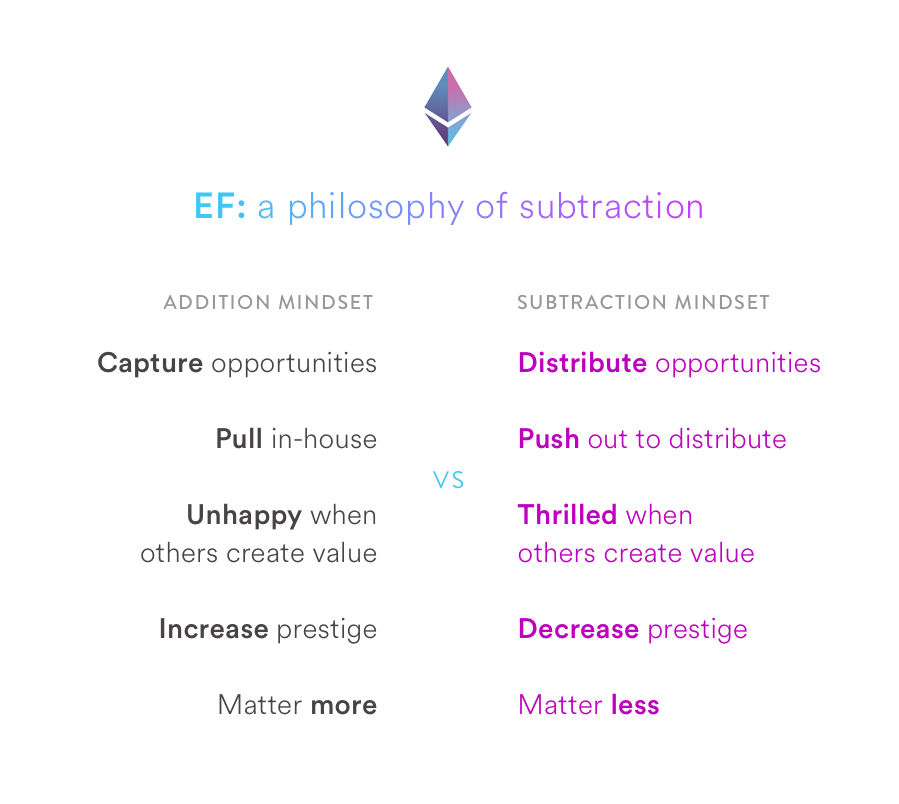As full of spirit as the month of May, and as gorgeous as the sun in Midsummer.
William Shakespeare
The quote above (at least the first part) is definitely something that describes the blockchain industry right now. It survived the crypto winter and is moving full speed ahead. It’s tough, powerful, and blooming, but there is still a veil of mystery surrounding it, at least from the perspective of end-users who are yet to be accustomed to the blockchain.
Luckily, there are hundreds of projects, news articles, blog posts, books, and instructors willing to remove that veil. It is a slow process, but a worthy one!
Let’s take a look at some of the most notable pieces of news from May. Did they contribute to the removal of the veil or added an additional layer of it to this technology?
Lamarkaz Creates Metacash — A Decentralized and Gasless DAI Wallet
Lamarkaz built a gasless non-custodial DAI wallet that enables its users to send DAI and use it to pay transaction fees instead of using Ether. The wallet is available as an Android app at the moment and you can download it on Google Play Store. On the other hand, the iOS app is still being developed, but it will be up and running soon. Nour Haridy explores the problem of Ether gas fees and presents Metacash in this article.
Incremental Decentralization by Eric Chung
Incremental Decentralization is an emerging pattern that proposes a gradual presentation of decentralization to new users. Chung discusses problems related to the UX of Web 3 that hinder the adoption of blockchain and dapps among end users and sees Incremental Decentralization as a great solution to it.
According to his text, some of the essential features of decentralization need to be “positively correlated to user comfort with Web 3.” In plain English, users need to take one bite at a time as long as there is hunger for this novel technology that’s leading them into the exploration of Web 3 and decentralization.
Ethereum Foundation Spring 2019 Update
Ethereum published an official blog post that discusses the near future of the company. Furthermore, the piece focuses on the Ethereum Foundation, its role in Ethereum’s ecosystem as a resource allocator, and its voice.
The second part of the blog focuses on Ethereum’s and Ethereum Foundation’s philosophy based on subtraction that advocates creating value outside the Foundation and sharing it with a broader ecosystem.

The third part of the blog discusses the teams supported by the Ethereum Foundation and their progress embodied in various upgrades and initiatives. Finally, the last part of the blog is all about resource allocation for the next 12-month period. According to the executive director of the company, Aya Miyaguchi, the Ethereum Foundation is planning to spend $30 million on various projects located all over the ecosystem in the period of one year.
The Most Expensive Lesson of My Life: Details of SIM port hack by Sean Coonce
Sean Coonce was a victim of a SIM port attack, which caused him serious damage — $100,000 was drained from his Coinbase account. He decided to share his story with the public, explaining the details and the timeline of the attack, and discussing how that kind of attack is carried out. It doesn’t matter whether you are a crypto owner or not, this piece is a must-read for everyone who cares about security.
Discussion about ERC20Migrator and related issues
Although not really an article, this Zeppelin forum thread focuses on ERC20Migrator and some of the issues related to it. Essentially, this contract enables an ERC20 token migrating/upgrading mechanism in an opt-in way. In other words, upgrading is possible even when there are no upgrade mechanisms such as ZeppelinOS.
Therefore, original token contracts are not required to have anything besides a working ERC20 interface. If you are interested in reading more about ERC20Migrator and other developers’ opinions about it, check out the Zeppelin thread.
Sandcastle, our Latest R&D Pre-Alpha Release, Brings SQL to Ethereum Smart Contracts by Shahan Khatchadourian, PhD
PegaSys co-founder, researcher, and developer, Shahan Khatchadourian, PhD, wrote a piece about their latest project named Sandcastle. Sandcastle will bridge the gap between SQL and Ethereum since it is basically an Ethereum SQL smart contract language. Their project is available in R&D pre-alpha release in the form of a Remix plug-in, and it can translate SQL into Solidity. In other words, if all goes well, millions of SQL developers could be honored with an additional title — Ethereum smart contract developers.
Architecture for Blockchain Applications by Xiwei Xu, Ingo Weber, and Mark Staples
Architecture for Blockchain Applications is an essential book for all software architects and developers who want to start learning how to build blockchain-based apps. The book offers an architectural perspective on various software systems important for using blockchains. Recently published, it was downloaded more than 9,200 times already on Springer Link.
ANALYSIS: Is there a “Consensus Effect?”
Published on May 14, this blog post by Team Poloniex discusses the possible correlation between the Consensus conference that takes place in New York every year and the average price of BTC and ETH that happens to increase every year before the conference. All the data used in this article is pulled from the daily average pricing on Poloniex. Crypto lovers who enjoy following price trends will have a ball!
Binance Security Breach
It seems that there was another major security breach in the crypto industry, and Binance was the main target this time. The exchange published an official Binance security breach update that discusses this large-scale violation where hackers managed to obtain a lot of private user info such as API keys, 2FA codes, and more.
According to the update, the hackers used various techniques such as viruses, phishing, and other types of cyberattacks. The total stolen amount was 7000 BTC, which is approximately $40 million. The company will use their #SAFU fund to cover the losses, which means user funds will not be affected by the attack.

Faster Plasma Exits with Nuo
Nuo aims to become the first lending platform that will be able to integrate fast Plasma Exits into Matic sidechains. In an official Medium post written by Siddharth Jain, the need for faster Plasma Exits is explained and Matic’s progress in supporting the Nuo project is discussed.
Blockchain: An Enterprise Reality by Benjamin Hall
Every now and then, someone needs to take a step back and dust off all the buzzwords and big ideas in order to take a look at objective reality. Benjamin Hall did just that in his overview, making an as realistic as possible overview that is not filled with hyperbole. Hall defines important challenges we face in blockchain, but also points to potential risks this technology brings.
What Are the Hot News in Blockchain in May 2019?
Let’s take a look at the most important pieces of news from May 2019 regarding blockchain technology.
Amazon Managed Blockchain General Availability Announced by AWS
Amazon Web Services announced in an official press release that Amazon Managed Blockchain is generally available. Users who register for this service will have an opportunity to create scalable blockchain networks and manage them.
People who already have AWS accounts can now start a new blockchain network in just a couple of clicks. The service is based on popular open-source frameworks, such as Ethereum and Hyperledger Fabric. You can learn more about it on the official page.
Amazon Wins PoW Cryptographic System
Amazon definitely had a lot of good news to share with the world in May 2019. The second important piece of news is that the company was granted a patent for Proof-of-Work cryptographic system that is similar to PoWs used in blockchains such as bitcoin. The patent also outlines the use of Merkle trees to solve a PoW challenge, in addition to other interesting benefits that Amazon received with this patent.
Grayscale Ethereum Trust Approved by FINRA for Retail
Grayscale is an asset management company that managed to receive an approval coming from FINRA, which means that it can now list Grayscale Ethereum Trust’s eligible shares. In other words, the Grayscale Security Trust has become the first publicly quoted security related to Ethereum.
A Secret Firm Called Libra Registered in Switzerland by Facebook
It seems that Facebook is interested in blockchain technology after all, as their internal cryptocurrency is expected to be launched soon. Simultaneously, Reuters reported that Facebook Global Holdings had become a stakeholder in a new company, called Libra Networks, registered in Switzerland. These moves seem rather strange, yet somewhat expected; still, they were a reason good enough to cause turmoil in the US Senate.
Major Retailers Start Accepting Bitcoin and Other Cryptos
A significant step towards the widespread adoption of cryptocurrencies has been taken since some big retailer names decided to introduce bitcoin and other cryptocurrencies and make them official payment methods.
Companies including Nordstrom, Crate and Barrel, and Whole Foods — a retail company owned by Amazon — now allow customers to pay for goods using cryptocurrencies, according to Fortune.
Fidelity Investments to Offer Crypto Trading
Fidelity Investments, one of the biggest asset management companies in the world, will begin buying and selling bitcoin for institutional customers, according to Bloomberg. The company created Fidelity Digital Assets back in October, predicting that hunger for the crypto market would rise on Wall Street.
Retail clients are not able to use Fidelity’s services at the moment but can turn to companies such as E*trade and Robinhood, both of which had already begun offering crypto trading even before Fidelity.
Interesting Projects in May
To sum up, let’s take a look at some of the projects that grabbed our attention in May:
- Polkadot — The main user-facing application that allows users to access all the features available on Substrate chains.
- LBRY — A blockchain-based digital marketplace run by a community that enables users to enjoy content from content creators they love.
- Hydro — An open-source project based on blockchain that aims to solve the unbanked problem.
- Decentraland — A decentralized virtual world owned by its users who can earn money by building and exploring it.
We prepared this blog post as an overview of the most engaging blockchain and crypto news and moments that marked the previous month.
Follow us and subscribe for more upcoming articles such as this one, and feel free to join the conversation on Twitter and LinkedIn. Visit our website to learn more about the services we offer.
This Month in Blockchain — May 2019 was originally published in MVP Workshop on Medium, where people are continuing the conversation by highlighting and responding to this story.



